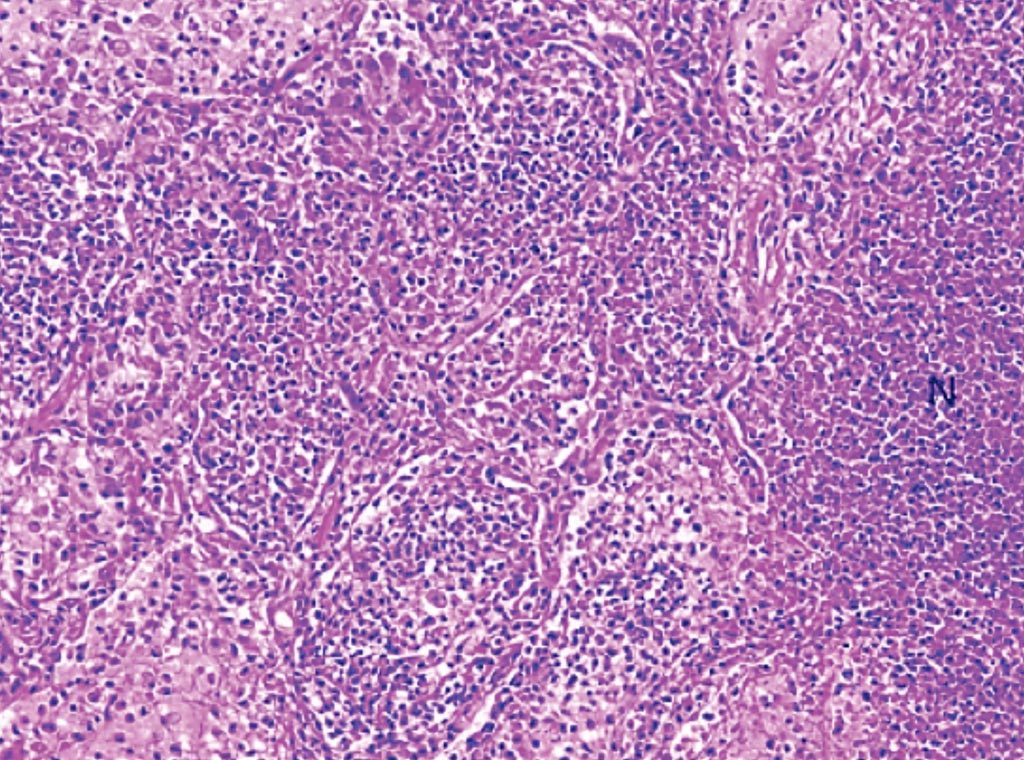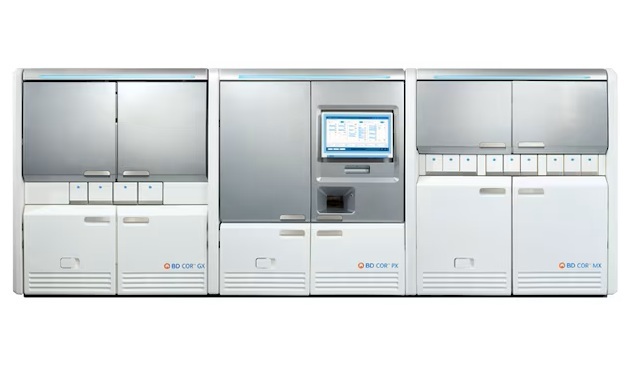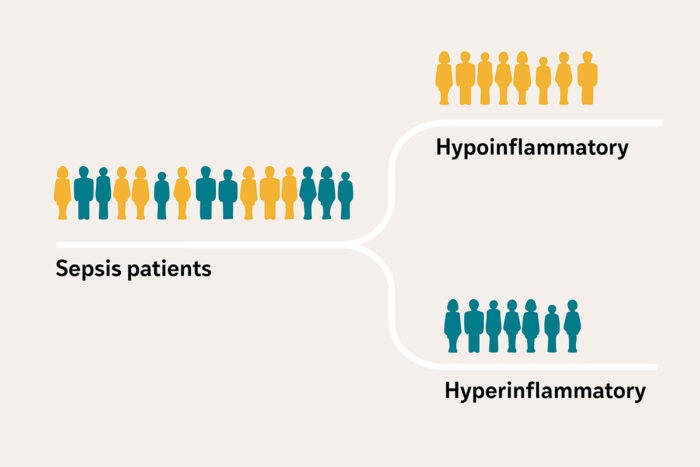Microbiome Alterations Influence Lung Disease Prognosis
By LabMedica International staff writers
Posted on 16 Oct 2018
Interstitial lung disease (ILD), or diffuse parenchymal lung disease (DPLD), is a group of lung diseases affecting the interstitium, which is the tissue and space around the air sacs of the lungs.Posted on 16 Oct 2018
ILD involves alveolar epithelium, pulmonary capillary endothelium, basement membrane, perivascular and perilymphatic tissues. It may occur when an injury to the lungs triggers an abnormal healing response. Alterations to the respiratory microbiome have been identified as a predisposing factor of interstitial lung diseases.

Image: A histopathology of interstitial lung disease showing acute injury with necrosis. Necrosis (N) is a harbinger of infection in an acutely ill patient. Infection always leads the differential diagnosis in this situation, even if special stains are negative (Photo courtesy of Professor K.O. Leslie).
Physicians at the Beaumont Health System (Royal Oak, MI, USA) and their colleagues conducted a retrospective analysis of 472 patients with ILD who were admitted to a large tertiary care academic center from January 1, 2010, to December 31, 2016. Patient data were extracted from electronic records using billing codes for various ILD. The majority of the patients had either pulmonary fibrosis or sarcoidosis.
The team collected 170 respiratory cultures were collected from the study population. The majority of the respiratory isolates were gram-negative pathogens (39% Pseudomonas and 18% other gram-negative organisms); 27% were methicillin-resistant Staphylococcus aureus (MRSA). Patients infected with gram-negative organisms (other than Pseudomonas) and MRSA had the highest 30-day mortality (39% and 32% respectively) compared with lower mortality for those infected with Pseudomonas and other gram positive organisms (7% and 14% respectively).
Patients infected with gram-negative organisms other than Pseudomonas also had higher rates of vasopressin administration compared with those infected with other organisms. Rates of intensive care units (ICU) admission also differed according to organism that was cultured. These associations persisted even after adjustment for the other variables including type of ILD, age, gender, comorbid conditions and smoking history. There was no association between the use of immunosuppressant medications or antifibrotics and the development of resistant pathogens.
Hira Iftikhar, MD, MBBS, the lead author of the study, said, “The presence of gram-negative bacteria is a risk factor for adverse events. These bacteria could lead to a higher mortality rate, ICU admission and increased vasopressor use. A larger study should be conducted to establish the risk factors for the mortality in hospitalized ILD patients including results of respiratory cultures.” The study was presented at the annual meeting of Chest, held October 6-10, 2018, in San Antonio, TX, USA.
Related Links:
Beaumont Health System









 Analyzer.jpg)




